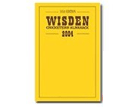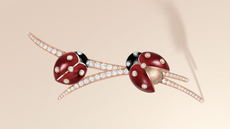BooK Review: Wisden Cricketers' Almanack 2004
As the world changes so does the game of cricket, and so too therefore does the game's bible, Wisden, with its mix of tradition and innovation.


This 141st edition has sought to make room for the ever-expanding number of matches, people and feats that have to be recorded by making a historic decision: from now on, certain records will be available only on the affiliated website, which raises the prospect of old buffers in MCC ties consulting their laptops at a crucial moment of play.
This new volume, edited once more by Matthew Engel, has the now usual mix of tradition and innovation. In the former camp are the five cricketers of the year; in the latter, a new list of the top 40 cricketers in the world, compiled on the scientific basis of their performances. The editor is also suitably trenchant in his notes, including an ex cathedra statement ? which the cricket authorities would do well to note ? that it is now a moral impossibility to play against Zimbabwe.
As well as containing all the details of first-class matches, test and one-day internationals from round the world, Wisden has a range of enjoyable articles and other cricketing marginalia. Without doubt, Country Life readers will find the article by Christopher Douglas on country-house cricket the highlight of this wonderful book. Mr Douglas reflects on a golden age in the half-century before the First World War when more than 300 houses had their own cricket grounds. Nottinghamshire alone had 18, and there were many more than that in Kent and Sussex. His article Temples of Bumblepuppy takes its name from a comment by the Victorian sports' writer E. H. D. Sewell on Ascott, a Rothschild house famous for its cricket in the 1890s.
'To the uninitiated,' he wrote, 'country-house cricket may savour sometimes of bumblepuppy, of taking things easy.' Sewell denied that that was the case. However, in an article written in 1924 in Country Life by H. D. G Leveson Gower, a celebrated gentleman batsman of the day, the author noted that 'champagne lunches are being horribly overdone'.
He added: 'Men do not play good cricket on Perrier Jouet... no, give us some big pies, cold chickens, a fine sirloin of English beef, and a round of brawn, washed down by good ale and luscious shandygaff.' Another cricketing gent of the time, Sir Julien Cahn, was also famous for the liberality of his champagne, and batted in a pair of inflatable pads pumped up by his manservant using a bicycle pump. The good news, as Mr Douglas points out, is that of a sample of 100 houses that staged cricket in 1904, 62 of the grounds still survive today, often bequeathed or on permanent loan to local clubs. Arundel, Goodwood, Highclere, Petworth and Holkham all have regular matches, and the late Sir Paul Getty built his own ground next to his fine house at Wormsley in the Chilterns. (Sir Paul Getty was the Almanack's former owner and died just after the publication of the last edition.)
The 141st edition includes a list of unusual occurren- ces in the game, such as the improbable 'fine leg arrives by parachute' and the even more improbable 'monks try to storm England test match'. There are also learned discourses on the future of wicket-keeping, on whether footballers have a nicer life than cricketers and a review of cricketing books by the film critic Barry Norman.
Above all, Wisden: Cricketers' Almanack 2004 for the first time gives the definitive answer to a question that seems philosophically central: 'What is cricket?' It is a valuable exercise, but one is tempted to conclude that if you have bought this wonderful book and got this far, you probably know already.
Sign up for the Country Life Newsletter
Exquisite houses, the beauty of Nature, and how to get the most from your life, straight to your inbox.
Country Life is unlike any other magazine: the only glossy weekly on the newsstand and the only magazine that has been guest-edited by HRH The King not once, but twice. It is a celebration of modern rural life and all its diverse joys and pleasures — that was first published in Queen Victoria's Diamond Jubilee year. Our eclectic mixture of witty and informative content — from the most up-to-date property news and commentary and a coveted glimpse inside some of the UK's best houses and gardens, to gardening, the arts and interior design, written by experts in their field — still cannot be found in print or online, anywhere else.
-
 The century-old enamelling technique used to create Van Cleef's lucky ladybird brooch — which has something in common with Country Life
The century-old enamelling technique used to create Van Cleef's lucky ladybird brooch — which has something in common with Country LifeThe technique used in the jeweller's Geneva workshop has been put to good use in its latest creation.
By Hetty Lintell Published
-
 ‘The best sleep in the sky’: What it’s like to fly in United’s Polaris cabin, approved by American icon Martha Stewart
‘The best sleep in the sky’: What it’s like to fly in United’s Polaris cabin, approved by American icon Martha StewartUnited’s Business Class cabin goes by the name Polaris and Martha Stewart is a fan. So, how does it fare?
By Rosie Paterson Published
